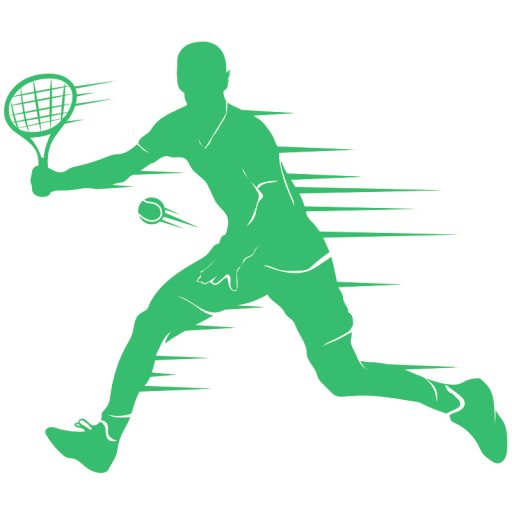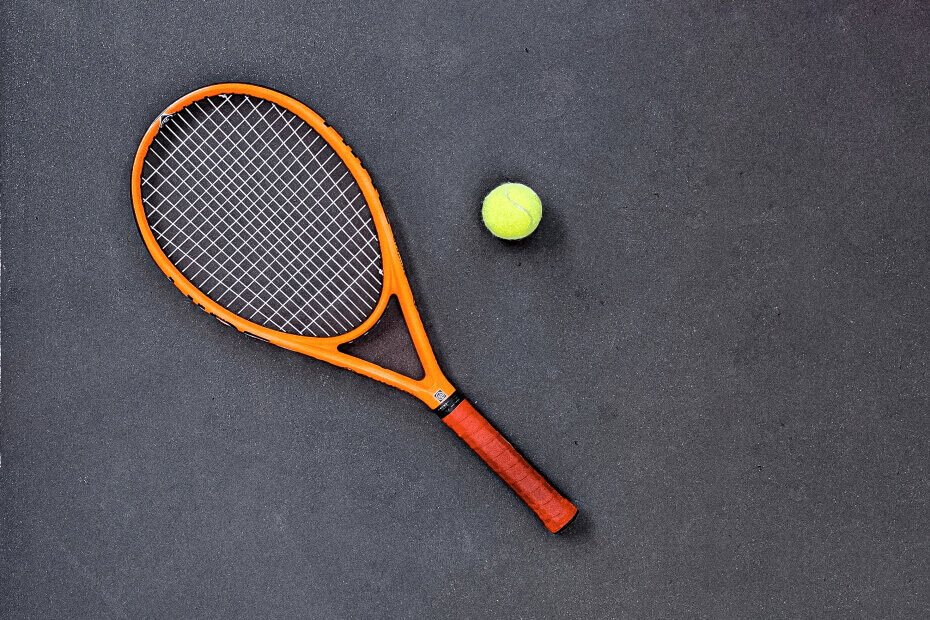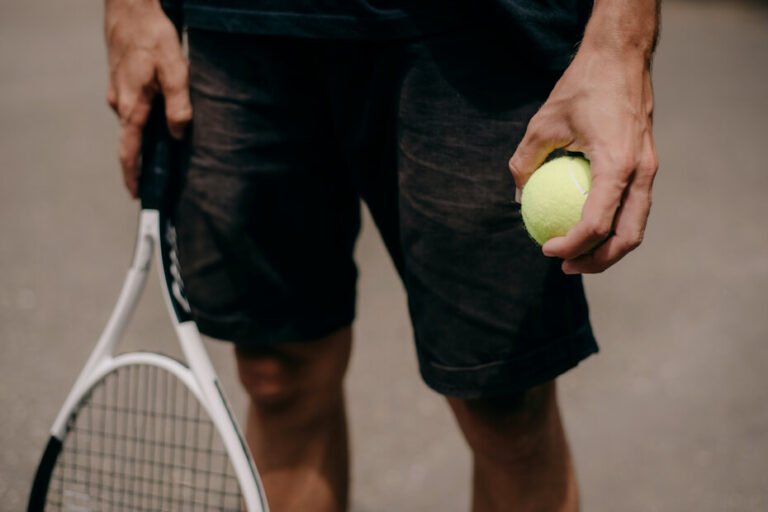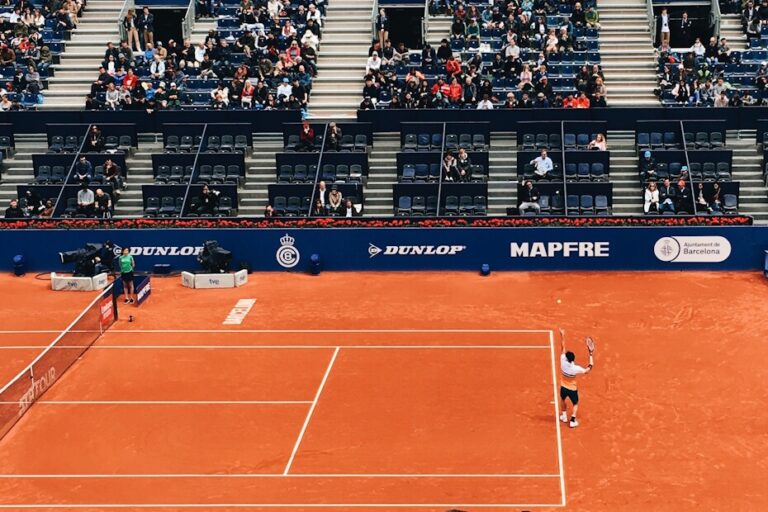Tennis as a sport only keeps getting more and more popular. It’s a sport that requires some amount of effort and dedication, but it’s not impossible to learn or understand. This is the very reason why many people take up tennis either as a hobby or professionally.
When it comes to tennis, new players need to understand that there are two ways to approach the learning process. The first is to get a solid understanding of the game. This includes learning the history, the rules of the games, the codes of conduct, the different grips and shots, and even the different types of courts where players play.
Only when new players understand these basics of tennis, the second step becomes easier. The second stage has to do with actually playing the game and learning tips and tricks to improve the skill set of players. So, for a beginner to learn tennis, it’s crucial to understand the game and its rules as well as practice and try out a few tips which can greatly help improve their gameplay.
Tracing The Origins
There’s a lot of debate when it comes to the origins of tennis. However, the popular opinion points towards the fact that tennis had its beginnings in Ancient Greece. This primitive form of tennis was not all similar to the version of tennis we know today. However, historians believe that it was such developments that eventually led to the evolution of the sport.
Fast forward to 12th century France, and we get evidence of another form of tennis. French handball, known as “Jeu de Paume,” or “game of the palm,” is believed to be the predecessor of tennis. In this game, players would volley a ball using their hands. There were no racquets. Players only wore leather gloves, and even this development came much later.
Over the years, as Jeu de Paume became increasingly popular, the leather gloves received an upgrade. The gloves got replaced by handles to hit the ball effectively and with better precision. Thus, this was the beginning of the tennis racquet, although nothing like the modern racquet.
Here are some interesting timelines worth noting about the history of tennis. It was sometime around the 1530s that King Henry VIII built the first-ever tennis court. 1583 was the year the world got to witness the first tennis racquet, which is comparable to modern racquets. This development came from Italy.
However, earlier racquets were not as common as they are today. The use of such racquets was limited only to the nobility of France and England. With the appearance of racquets, the sport received a great boost and saw much participation. Initially, the game was played outdoors, but later, the game became an indoor sport.
At the time, the ball was also nothing like the tennis balls of today’s time. The ball was simply a wad of wool or cork. This was then covered by a layer of leather or cloth. The layer of leather was the primitive form of what we know today as the nap, which helps control the speed and trajectory of the ball. The rubber ball only made its appearance centuries later.
The Gradual Evolution
What started as an outdoor leisure game soon got picked up by the nobility of England. These nobles were responsible for commissioning the construction of several courts throughout England. We also have documented evidence that suggests that during this time, there were more than 1,800 indoor courts which were only possible due to the game’s growing popularity.
Slowly, the outdoor playing grounds turned into indoor courts. Racquets started to come with strings. The tennis ball that was leather slowly became rubber balls. However, real tennis was the immediate predecessor of the lawn tennis or royal tennis we know today. Real tennis was played throughout the 16th to the 19th centuries. Even today, there is still a large chunk of people who partake in this game.
Here’s an interesting fact. It was only in the closing decade of the 16th century (1599) that the first-ever written rules of tennis came into existence. By the start of the 18th century, real tennis was replaced by lawn tennis. And the invention of the vulcanized rubber was what helped this transition. The rubber balls were bouncier and better for playing outdoors.
The Modern Tennis
The birth of modern tennis was partly due to the efforts of Major Harry Gem as well as Augurio Perera, who jointly founded the Leamington Tennis Club in England. However, it was the timely action of Walter Clopton Wingfield, who is also known as the father of modern tennis, that made lawn tennis a reality by patenting the game in 1874.
The game was now no longer confined only to Europe. Slowly and gradually, it spread to countries such as China and even the United States. It took no time for it to become a popular and global sport. Different tennis clubs and organizations were formed, and tournaments began to be organized, such as the Wimbledon Cup and the Davis Cup, which are still popular and prestigious titles today in tennis.
The Rules Of Tennis

For anyone planning to learn tennis, understanding and learning the rules is the most crucial step. If players do not learn the rules by heart, the sport loses its meaning. So, beginners have to learn things such as the scoring system, court dimensions for singles and doubles matches, and also the serving rules.
The Basics
The whole point of tennis is to volley the tennis ball. If it’s a singles match, individuals need to attempt to hit the ball so that their opponent cannot return it. The ball should also land inside the court’s boundaries to be considered a point. If players hit the ball outside the lines, they end up losing a point.
At any given moment during the point match, players cannot touch the posts or the net. Players also should stay within the boundaries of the court at all times. Exchanging sides happen only during odd games. For example, players or teams will switch sides during the 1st, 3rd, 5th, games, and so on.
Carrying the ball around in the racquet is also not acceptable. Once the ball is in motion, players cannot hit it more than once. They only get one shot at hitting the ball to return it to the opponent. Furthermore, players need to wait for the ball to cross the net before they can return it.
If players cannot return the ball after it bounces once on the court, then the player who missed the shot will lose a point.
One of the most basic rules of tennis is that tennis does not entertain verbal abuse and swearing. Shouting and screaming is not desirable, but players can do so a few times to relieve stress but not too much. The racquets should always be in the hands of the players. It should not drop. Else, this can warrant a penalty.
Every serve shot should bounce once on the opponent’s side of the court before they can attempt to return it.
The Scoring System
Points are the smallest unit of measurement in a game of tennis. Points are awarded when opponents cannot return the ball or when opponents hit the ball outside the court dimensions. A game of tennis starts with zero points, also known as love. A tennis game consists of four points, 1st point (15), 2nd point (30), 3rd point (40), and 4th point (game) points.
So, how do players win a tennis game? Well, let’s find out. We now know that a tennis game consists of four points. Any player or team that reaches four points first with an advantage or lead of two points wins the game. But how many games are there? One set of tennis consists of at least six games. A tennis set is won when a player wins six games with a difference of two. Likewise, players or teams win the match when they win more sets than the opponents.
In case a game reaches a tie of 40-40 points, then a deuce is called. How do players break a deuce? It’s simple. The first team or player to score two consecutive points will win. If a player scores a point first, but then the opponent scores the next one, the game enters a deuce again until one team or player scores two consecutive points.
If the score of a set reaches 6-6 games, then what happens? The player or the team will enter a tiebreak set. The one who wins the final ‘7 Point Tiebreak’ game will win the set. Tennis matches can either be best of three or best of five sets.
In simple words, to win a match of tennis, players or teams need to win more sets. To win sets, players or teams need to win six games by a margin of two games.
Once The Game is Live
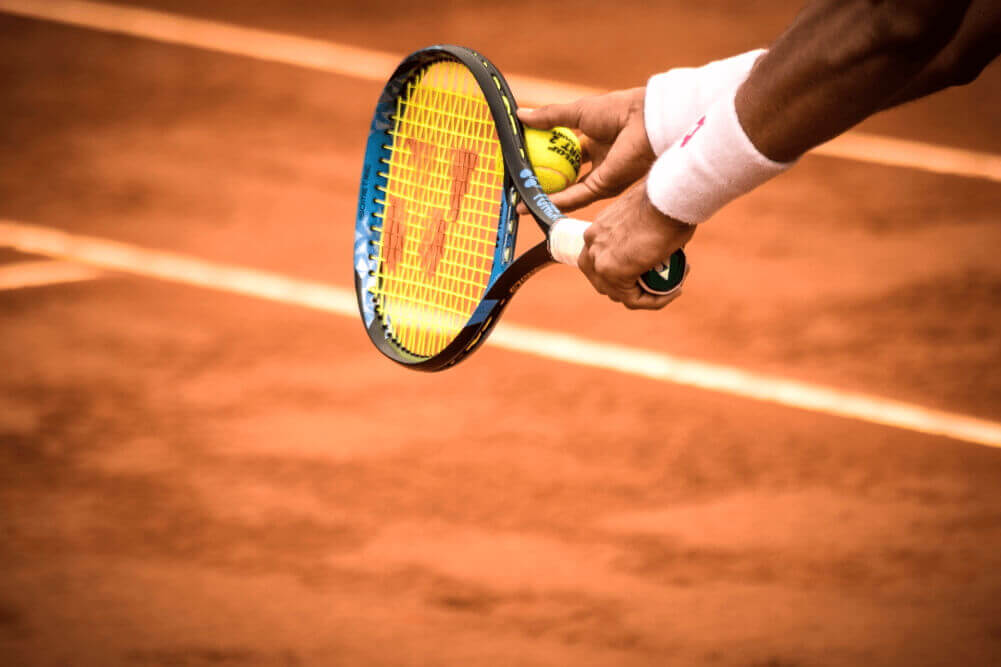
All tennis matches begin with a coin toss to determine who serves first and who gets which side of the court. The toss is usually done by the chair umpire. Once the decision on who serves first is decided, the game commences, and the following rules are applied:
- The server’s feet should not move beyond the baseline.
- If the server cannot serve successfully, it is called a “Fault.” The server is given another chance. If the service fails again, it is called a “Double Fault,” and the server loses the point.
- If the ball touches the net during the second serve and manages to go into the opponent’s side, a “NET SERVE,” is called. This means the server will get another chance without losing any point. However, if in the second attempt, the ball touches the net again, it is an “OUT,” in which case the server loses the serve and the point.
- Once the service is successfully made, the point game is in motion. Players can hit and return the ball an unlimited number of times until one player misses the shot or the ball goes outside the court lines.
- For a singles match, players need to aim the ball within the bounds of both the service courts, the singles sidelines, and the backcourt. Successfully doing this will earn them a point.
- For doubles matches, teams need to aim the ball within the doubles sidelines, the service courts, and the backcourt. If they manage to do this successfully, they’ll earn a point.
The Grips
Grips are very important when it comes to tennis. They can help players counter balls more efficiently and also make the opponents run and dash for the balls. Tennis grips are all about holding the racquet in a particular way.
To form different grips, players need to know what bevels are. These are the edges present on the shaft or handle of the racquet. There are a total of eight bevels. Let’s find out what types of grip there are and which grips will best suit a beginner.
- Continental Grip
When it comes to tennis grips, the continental grip is one of the easiest for beginners to master. It is a forehand grip. This is a versatile grip and can be used to counter different serves and shots.
To achieve this grip, players need to place their index finger knuckle and heel pad on bevel number two. This is for right-handed players. Left-handed players need to place them on bevel number eight.
- Eastern Forehand Grip
One of the major forehand grips is the eastern grip. It is known for its versatility and can be modified as well. You will notice that top tennis players such as Roger Federer also make use of this grip with minor adjustments.
For right-handed players, they need to place their index finger knuckle and the heel pad on bevel number three. Left-handed players need to place their palms on bevel number seven.
- The Semi-Western Grip
This is also a forehand grip and is very popular among professional players. This is a good grip if you want to get aggressive with your shots. However, for beginners, this is not the easiest to master and may require time and a lot of practice.
To form this grip, right-handed players need to place their index finger knuckle on bevel number four. However, if you play with your left hand, place it on bevel number six.
- Western Grip
Another popular forehand grip has to be the western grip. The popularity of the western grip was due to a rise in the spirit of competition and the evolution of the game.
To achieve this grip, simply proceed to place your index finger knuckle on the fifth bevel. New players might find it difficult at first, but it gets easier with experience and practice.
- Two-Handed Backhand
We are now moving on to the backhand grips. If beginners want to reach new levels of mastery, they need to learn the different backhand grips. But, don’t rush. Get comfortable with one form of grip first, preferably any one of the forehand grips.
The two-handed backhand grip is one of the most popular backhand grips. Even children are taught this grip first when it comes to backhand grips. To form this grip, place your index finger knuckle on the second bevel if you’re right-handed. In case you’re left-handed, place it on the eighth bevel. Now wrap your finger around the handle. Once you get this form, use your non-dominant hand and place the index finger knuckle on the seventh bevel for right-handed players, and for left-handed players, place it on the third bevel.
- One-Handed Backhand
This grip is popular among men’s players but not as popular as the two-handed. The one-handed backhand grip is similar to the two-handed, but this particular one is harder to master and requires more strength.
Place your index finger knuckle on the first bevel. Players need to make sure the handle is parallel to the knuckles, excluding the thumb. The butt of the handle must also be at the base of your palm. Proceed to wrap the handle with your fingers.
Why Grips Matter
Having a firm understanding of the different tennis grips is really important. Are you wondering why? It’s because players need to utilize different grips to counter different shots. Whether it is a low ball, a topspin, a slice, or even a smash, if you are well-versed with the different grips, you can surprise your opponent with an excellent return using the appropriate grip. Some grips offer added reach, more power, and even offer better angles.
The Different Shots
Tennis is a game where players can master different types of shots. Each shot has its merits and weaknesses. So, knowing which shot to give to an opponent can decide the fate of who wins and who loses. Every player, even professionals, cannot easily counter every shot. Here are some of the most popular shots in tennis.
- Serve
Every game of tennis begins with the serve shot. This is one of the most important shots, and players serving need to stand behind the baseline.
- Volley
This is a shot that requires the player to stand near the net. In a volley shot, players hit the ball before it bounces on the ground.
- Smash
Also known as overhead smash, this shot is performed when the ball is right above a player’s head. This type of shot is very difficult to return because of its power and high speed.
- Groundstrokes
There are two types of groundstrokes. One is the forehand, and the other is the backhand. For the forehand, the palm of your dominant hand should face away from you. In the case of a backhand groundstroke, the palm should face the player.
- Lob Shot
The lob shot is played when players try to keep their opponents away from the net, simply by hitting the ball over them. It is a shot that players use as a last resort, and hence, this is a defensive shot usually made to reset the point and to give players some time to get into a better position.
- Drop Shot
Players can perform drop shots using either a forehand or a backhand grip. The idea of the shot is to land the ball as close to the other side of the net as possible.
- Slice
The slice shot and the drop shot are very similar. While the drop shot is an offensive shot, the slice is more of a defensive one. This shot creates a backspin causing the ball to stay low to the ground, forcing your opponents to stretch to reach the ball.
The Playing Courts

Different courts require different strategies. So, knowing what type of court you’re playing in is important to form mental tactics to defeat your opponents. Players who are starting to play tennis should know that there are generally four types of tennis courts.
One of the most popular courts is the grass court. This type of court was where lawn tennis was first played. Grass courts are great for faster players as their slippery surface allows the ball to move faster with a lower bounce.
The next type of court is the clay court. This surface became popular because grass courts are hard to maintain. Moreover, this is also a great choice of court for beginners as the clay reduces the speed of the ball.
Hard courts are also another type of court. This type of court has an acrylic surface that is mixed with sand. The speed of the ball is faster than the clay courts but slower than the grass courts.
The last type of court is the carpet court, usually used indoors. The carpet is simply rolled and placed on the floor. It’s easy to place and remove.
Tips For Beginner Tennis Players
So, now that you’ve understood the game and everything related to tennis, it’s time to move on to the next stage. This stage involves picking up the racquet and playing the game. However, if new players want to master the game quickly and efficiently, then there are some tips to try.
1. Serve Properly
The serve is the most important shot. The common mistake new players tend to make is using their full-body strength to serve and causing the ball to go outside the lines. So, watch your serving speed and power.
2. Don’t Attempt All The Shots
Amateur players try to make all the shots thrown at them. This is because they get frantic. However, experts advise going only for the shots that are a sure hit.
3. Practice is Key
This might seem obvious, but many new players don’t have a practice routine. If you want to learn tennis, dedicate some time to practice. Moreover, practicing with people who already know the game can be helpful. You will pick up a trick or two from them.
4. Watch Your Feet
Tennis is a game where foot positioning is really important. If players don’t know how and where to position their feet, hitting even the easiest shot can prove to be a challenge. When your body weight, as well as your back foot, are behind the ball, your shots will be more accurate and powerful.
5. Do Not Panic
It’s natural to want to win. And so, if you’re down by a few points, do not get panicky. Instead, collect yourself and start to form different strategies and tactics to counter your opponent’s shots.
6. Know Your Opponent
One of the greatest tips a beginner can make use of is to study their opponents beforehand. Players need to know which shots their opponents are good at which ones they’re bad at. Make use of their weaknesses to defeat them.
Codes to Follow
One thing that new players need to know is the codes of conduct. This will prevent them from embarrassing themselves in the court. Codes of conduct basically mean proper behavior or etiquette to follow while playing tennis.
1. No Verbal Abuse
Tennis is a game where verbal abuse is not permissible or tolerated. If players cuss or swear, this can warrant a penalty.
2. Don’t Challenge The Umpire Multiple Times
Did you ask for clarification from the umpire and got an unsatisfactory answer? If that’s the case, you need to accept it and continue the game without challenging the decision made.
3. Remember to Change Ends
When an odd game is over, players and teams need to switch ends. This is a basic tennis code that new players need to be aware of.
4. Serving Means Calling
If you are serving the ball, always remember to call the score before serving. This will help players keep track of the score and also make your opponent know that you’re ready to serve.
5. Never Roll a Ball Back
If you don’t want people shouting at you, then never roll back a ball into another court when they are still playing. If you’re in a place where there are multiple courts, it’s normal for tennis balls to come into yours. Simply wait for their game to end and hand it over personally.
6. Returning The Ball
If you’re the person who is receiving the balls, always make sure you return the ball to the server if it is on your side of the court. This is basic decency when it comes to tennis.
Conclusion
Tennis is a sport that requires players to learn the basics before they can start playing. This allows the game to function more smoothly and efficiently. If players do not know the rules, they’ll be unable to keep score or even break ties. Moreover, without knowing the different grips and shots, their skill set will be limited and make them poor players later on. Knowing which court they’re playing at can also help them prepare strategies to defeat their opponents.
